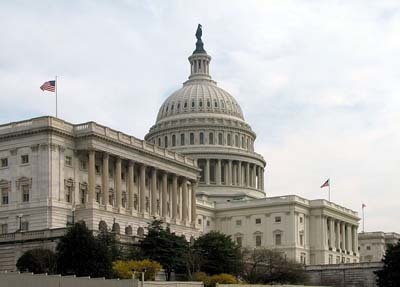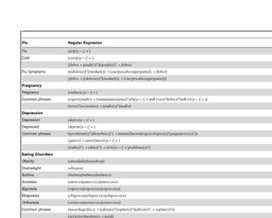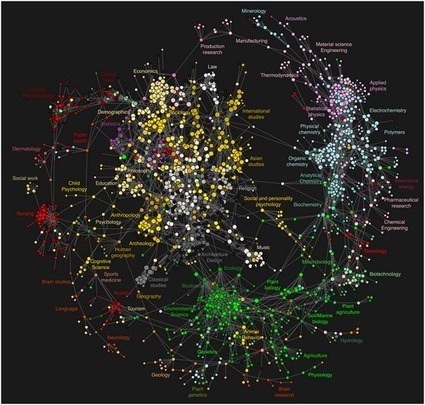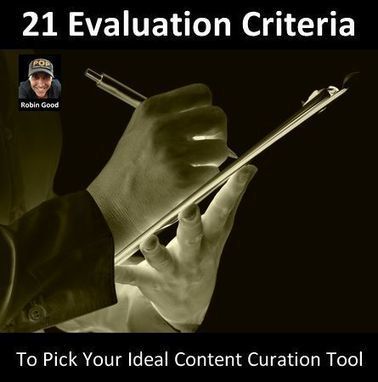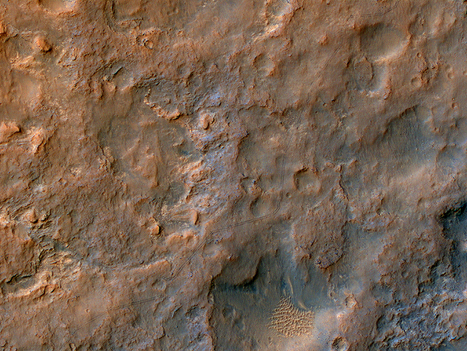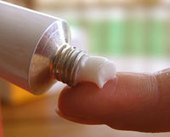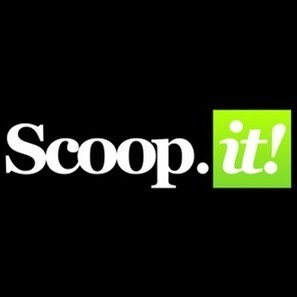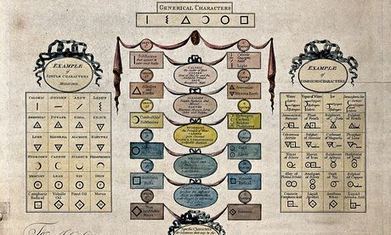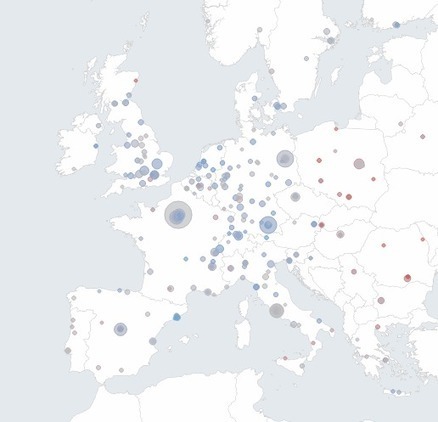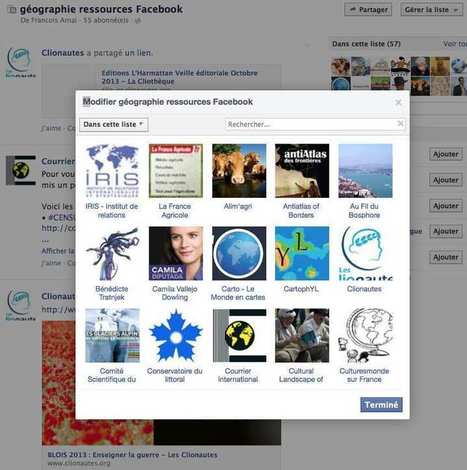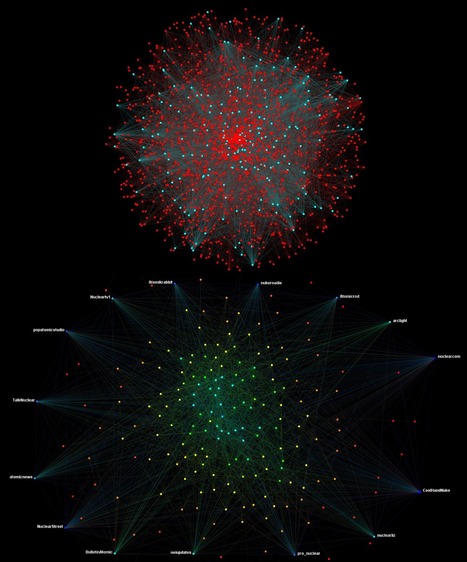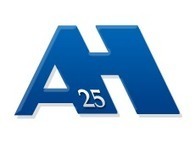Voici une présentation faite par Charles Biberson sur la curation de contenu : Charles Biberson - thèse professionnelle - curation et création de valeur - novembre 2013 from Charles Bib &nb...
Get Started for FREE
Sign up with Facebook Sign up with X
I don't have a Facebook or a X account


 Your new post is loading... Your new post is loading...
 Your new post is loading... Your new post is loading...
Numerama L'Open Access s'impose aux USA pour la recherche publique Numerama Depuis deux ans, l'éditeur fait face à une fronde importante dans la communauté scientifique, en témoigne la pétition "The Cost of Knowledge", signée aujourd'hui par plus...
Le cercle des communes labellisées Villes et villages étoilés par l'Association nationale pour la protection du ciel et de l'environnement nocturnes (ANPCEN) continue à s'élargir. Le palmarès 2013, Via Gengembre Dominique
by Víctor M. Prieto, Sérgio Matos, Manuel Álvarez, Fidel Cacheda, José Luís Oliveira With the proliferation of social networks and blogs, the Internet is increasingly being used to disseminate personal health information rather than just as a...
Gilbert C FAURE's insight:
big data for health
Altmetrics are a hot topic in scientific community right now. Classic citation-based indicators such as the impact factor are amended by alternative metrics generated from online platforms. Usage statistics (downloads, readership) are often employed, but links, likes and shares on the web and in social media are considered as well. The altmetrics promise, as laid out in the excellent manifesto, is that they assess impact quicker and on a broader scale.
The Evolving Guide on How the Web is Changing Research, Collaboration and Scholarly Publishing. Edited by Sönke Bartling & Sascha Friesike.
Gilbert C FAURE's insight:
inside excellence by nonsense http://book.openingscience.org/basics_background/excellence_by_nonsense.html
RT @NatureBiotech: High dimensional analysis of the immune system: A joint focus with Nature Immunology http://t.co/WMjeS1yk7C
Nonetheless we are just at the beginning of a new era, in which content curation will be as important as search, there is already an apparent abundance of content curation tools of all kinds. Via Robin Good 
Lori Wilk's curator insight,
February 2, 2014 10:21 PM
This article details that there are so many aspects of content curation to consider and tools that can make each of these more managable and the process more efficient.
Definition of Health 2.0 and Medicine 2.0: A Systematic Review ABSTRACT Background: During the last decade, the Internet has become increasingly popular and is now an important part of our daily life. When new “Web 2.0” technologies are used in health care, the terms “Health 2.0" or "Medicine 2.0” may be used. (J Med Internet Res 2010;12(2):e18)
During the last decade, the Internet has become increasingly popular and now forms an important part of our daily life [1]. In the Netherlands, the Internet is even more popular than traditional media like television, radio, and newspapers [2]. Furthermore, the impact of the Internet and other technological developments on health care is expected to increase [3,4]. Patients are using search engines like Google and Bing to find health related information. In Google, five percent of all searches are health related [5]. Patients can express their feelings on weblogs and online forums [3], and patients and professionals can use the Internet to improve communication and the sharing of information on websites such as Curetogether [6] and the Dutch website, Artsennet [7] for medical professionals. The use of Internet or Web technology in health care is called eHealth [1,8]. In 2004 the term “Web 2.0” was introduced. O’Reilly defined Web 2.0 as “a set of economic, social, and technology trends that collectively form the basis for the next generation of the Internet, a more mature, distinctive medium characterized by user participation, openness, and network effects” [9]. Although there are different definitions, most have several aspects in common. Hansen defined Web 2.0 as “a term which refers to improved communication and collaboration between people via social networking” [10]. According to both definitions, the main difference between Web 1.0 (the first generation of the Internet) and Web 2.0 is interaction [11]. Web 1.0 was mostly unidirectional, whereas Web 2.0 allows the user to add information or content to the Web, thus creating interaction. This is why the amount of “user-generated content” has increased enormously [12]. Practical examples of user-generated content are online communities where users can participate and share content. Examples are YouTube, Flickr, Facebook, and microblogging such as Twitter. Twitter, for example, improves communication and the sharing of information among health care professionals [13].... Via rob halkes
Genetic Engineering News
by Nancy Atkinson on January 9, 2014. Want to stay on top of all the space news? Follow @universetoday on Twitter. Tracks from the Curiosity rover are visible from orbit to the HiRISE camera on the Mars Reconnaissance Orbiter, taken on ...
Psoriasis Registry: Tool for Comparing Effectiveness and Safety of Therapies SkinInc.com By collecting, analyzing and disseminating data from thousands of people with psoriasis, the registry will help clinicians, researchers and the pharmaceutical...
Probability that data from a sample of scientific papers remained accessible over time: http://t.co/xVE8Zvj9DS http://t.co/qY2TdYN1Bd |
This article concerns the Participatory Web and the impact it has on academic researchers’ perceptions of digital scholarship practices. The Participatory Web, as a space of active involvement, presence and socialisation of knowledge, has the potential to introduce significant changes to scholarly practice and to diversify it. This article draws on the findings of a narrative inquiry study that investigated the habitus of 10 digital scholars. Via Nik Peachey
Gilbert C FAURE's insight:
to read 
Nik Peachey's curator insight,
February 4, 2014 4:06 AM
This looks like a really interesting read. A very important area. 
Enrico De Angelis's curator insight,
February 4, 2014 4:56 AM
It seems very important to me the following statement: «The integration of the Participatory Web in scholarly practice means a change in the conventions of (co)creating, discussing and making new knowledge more accessible to different audiences»!!! 
Johannes Maurek's curator insight,
February 23, 2014 2:38 AM
Besonders interessant ist die Gegenüberstellung mit den Forschungsergebnissen über den medialen Habitus von Lehramtsstudierenden von Sven Kommer und Ralf Biermann. Spannend ist ein genauerer Blick auf die Bruchlinien zwischen alter (traditioneller) und neuer (digitaler) Schulkultur.
Apprenez à utiliser Scoop.it !
The Guardian (blog) The Wellcome Trust's treasure trove of chemical images The Guardian (blog) The UK's leading medical research charity, the Wellcome Trust, has donated a treasure trove to the world: more than 100,000 images covering the history...
Trove : la revanche du Washington Post sur la technologie Le Figaro L'idée est de proposer aux utilisateurs de s'abonner à des collections de contenus sélectionnés par d'autres utilisateurs, consommateurs d'information aguerris et dévoués -...
Bioinformatics is making an impact in medical and pharmaceutical research by helping to accelerate the development of promising treatments and the potential of personalized medicine. Via Krishan Maggon
This web application visualizes scientific excellence worldwide in 17 subject areas. Via François Christiaens
Gilbert C FAURE's insight:
pas facile à ouvrir du CHU où je suis
La géographie sur Scoop it : les meilleurs &topics& le 27 Octobre 2013. Via Christophe Chambet-Falquet
Avec la quantité d’informations publiées quotidiennement sur Internet, il est devenu facile de se tenir informé sur les sujets qui nous intéressent. Mais Via Ça Compte pour moi
Gilbert C FAURE's insight:
Tout à fait d'accord avec le contenu de cet article de Sylvie sur les outils de curation et tout particulièrement de Scoop.it. J'y ajouterai que la curation de contenus scientifiques et médicaux est une activité cruciale dans l'enseignement et la recherche, fondamentale ou médicale. Scoop.it ajoute une ouverture au monde "global" complémentaire des bases de données habituellement utilisées et permet de constituer dans le cloud des bases de données spécifiques ciblées. 
Ça Compte pour moi's curator insight,
January 20, 2014 8:22 AM
Article écrit par Sylvie Corlay-Knaff suite à la visioconférence organisée par Scoop.it en décembre dernier. Vous y trouverez des explications sur le concept de curation de contenu et ses multiples bénéfices ainsi que des exemples concrets des fonctionnalités avancées de Scoop.it. Merci Sylvie pour cet article ! 
France Lafleur's curator insight,
January 21, 2014 12:22 PM
Au-delà de l'information dont nous profitons largement. Le respect de la propriété intellectuelle est importante. Toutefois, ici, il est plutôt question de recherche intellectuelle. À voir.
Dogme en vigueur à l’étage gouvernemental: la science se concentre, il faut donc concentrer les financements sur quelques sites que l’on va bien sûr qualifier «d’excellence». Il est certain que ce serait ballot de financer surtout les médiocres… Ce dogme sert d'analyse et de guide à de nombreuses politiques et réformes du financement de la recherche publique dans des Etats très différents... dont la France. Avec une singulière uniformité de discours entre la droite et la gauche de gouvernement. Pour nos ministres et nos députés - enfin, les rares qui s'intéressent à la recherche scientifique - le dogme est établi et la ligne de conduite claire: il faut concentrer les financements, cesser la "dispersion", le "saupoudrage" des crédits publics. (...) - par Sylvestre Huet, {Sciences⊃2;}, 09/01/2014 Via ESR_Info
Within its limits, SNA can be applied to identify individuals or organizations within a network, generate new leads and simulate flows of information or money throughout a network. Via Antoine VS, François Christiaens
Gilbert C FAURE's insight:
impressive! evaluation of the future of influencing individuals in science!
Presentation from Internet Librarian West on strategies for supporting students in the library research process; based on Carol Kuhlthau's model Via Elizabeth E Charles, Wendy de Jong, Lynnette Van Dyke 
Louise Robinson-Lay's curator insight,
January 12, 2014 3:57 PM
This is an important skill for students to learn. This slides how is a great step-by-step approach to teaching it.
Our students are keeping a record of their learning throughout the school year by uploading products, answering essential questions, and writing reflections. Click on their e-Portfolios below to... |


